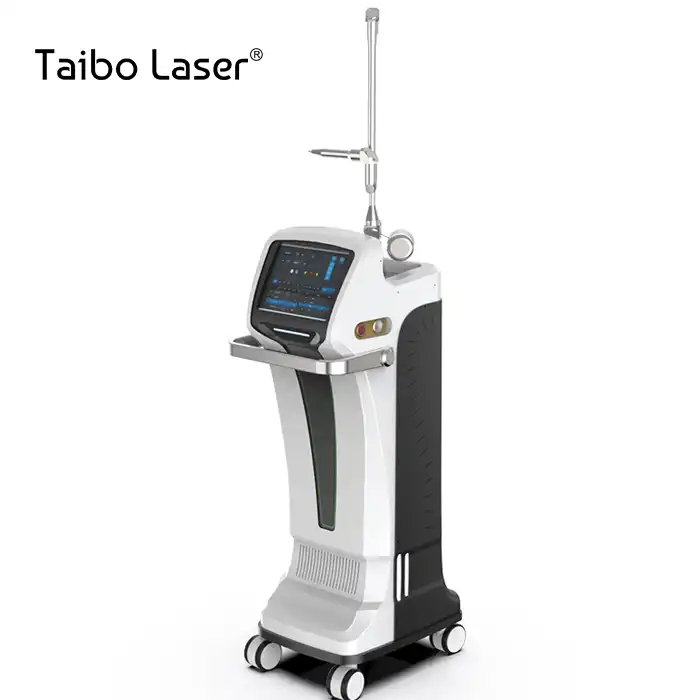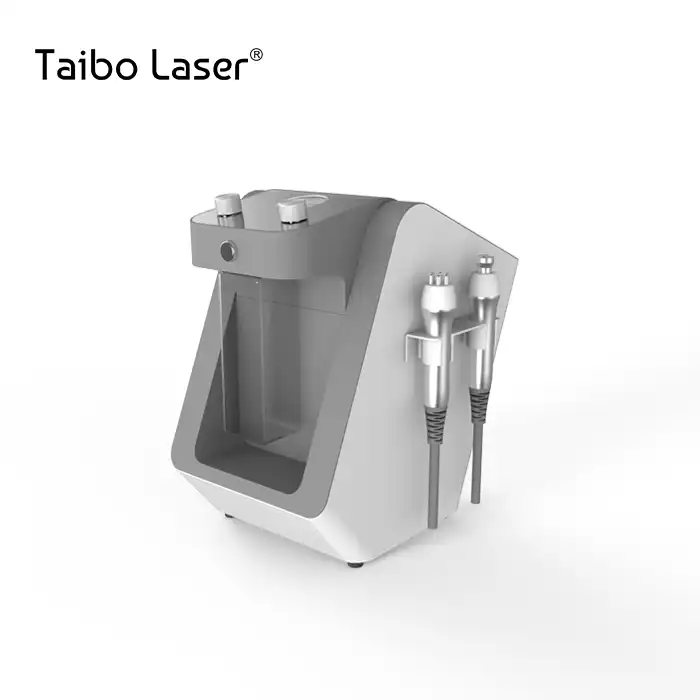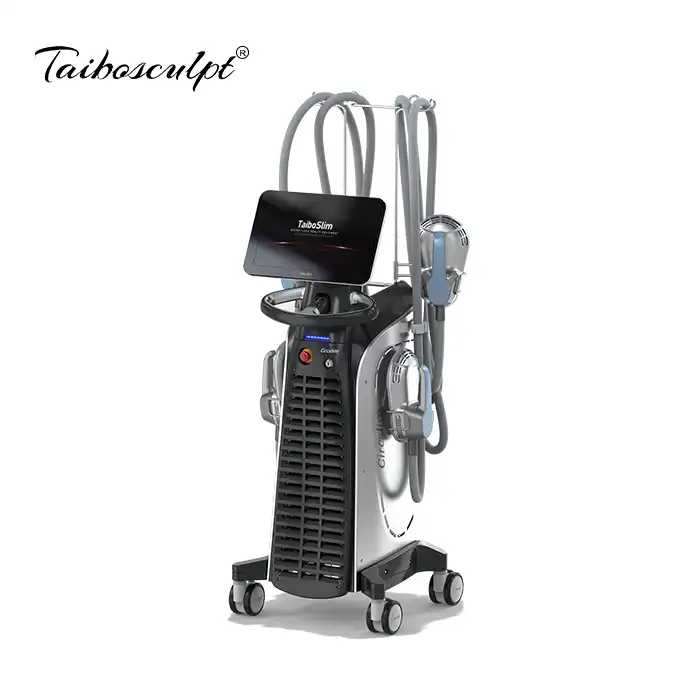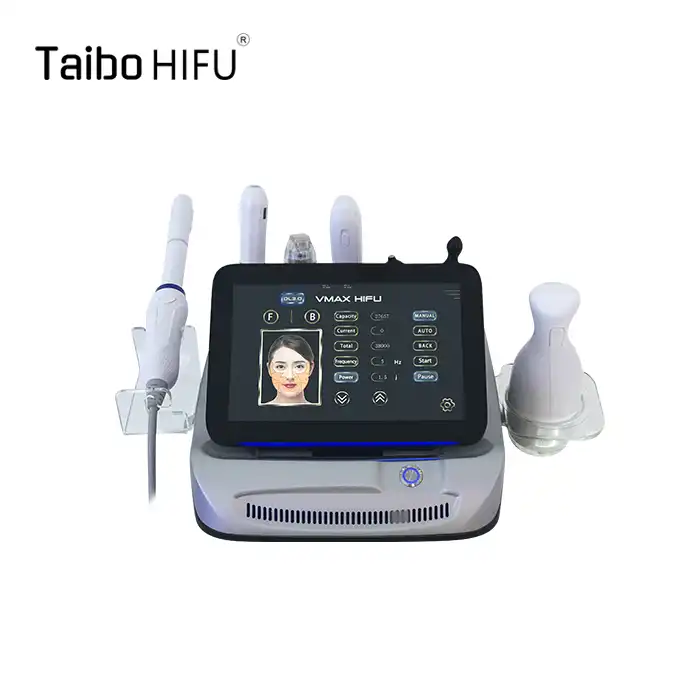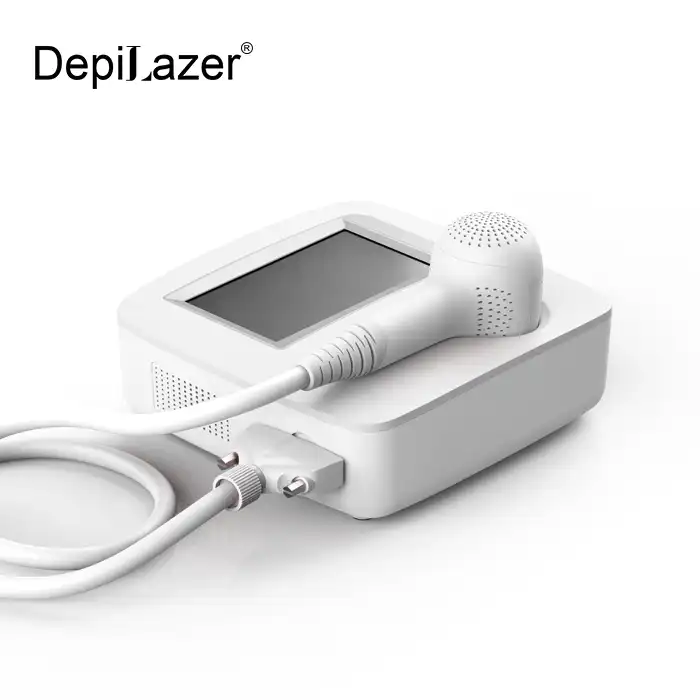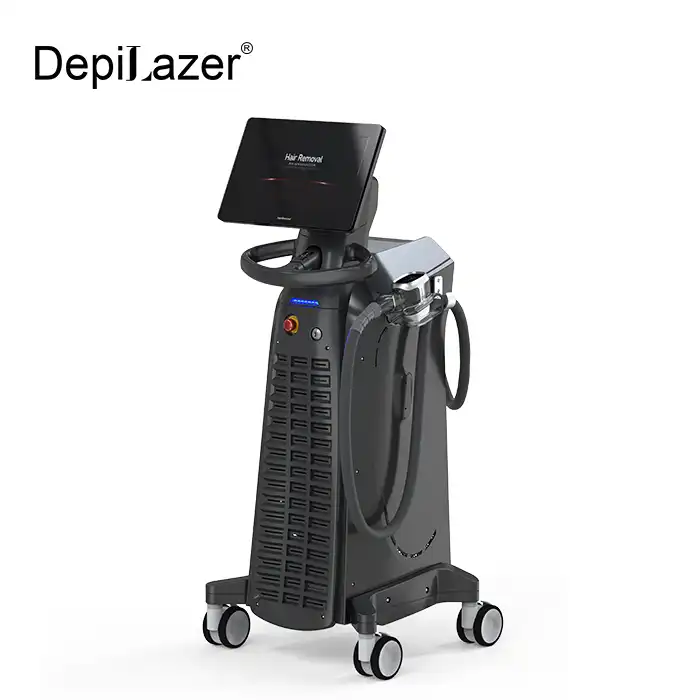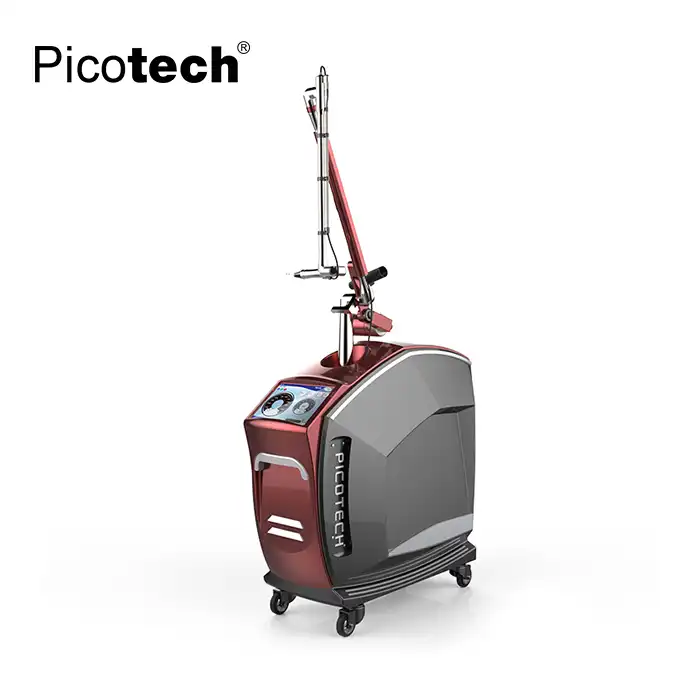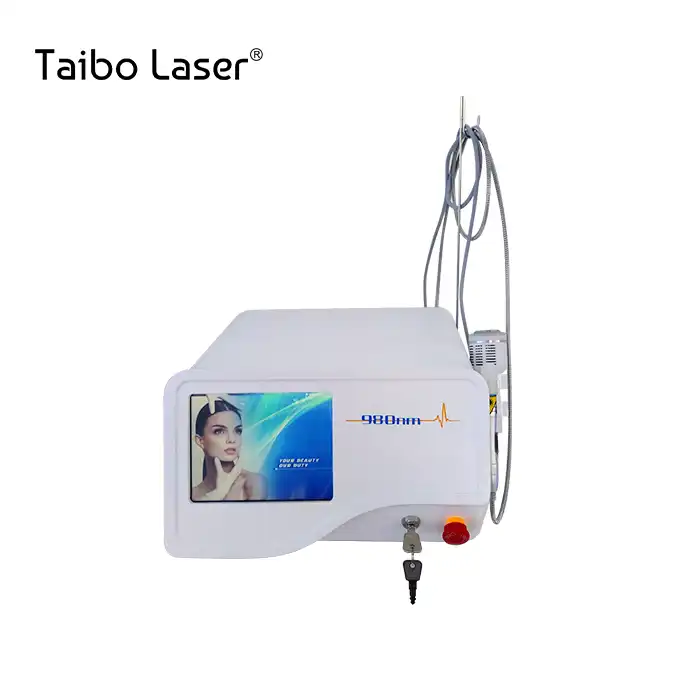
How Laser Nd Yag Q Switched Works for Freckle Removal?
2025-09-11 09:10:18
Freckles and pigmentation concerns affect millions of people worldwide, leading many to seek effective treatment solutions. The laser nd yag q switched technology has emerged as a revolutionary approach to address these skin imperfections with remarkable precision and safety. This advanced laser system utilizes specific wavelengths to target melanin deposits in the skin, breaking down pigmented lesions while preserving surrounding healthy tissue. Through photomechanical action rather than thermal damage, the q switched nd yag laser delivers controlled energy pulses that fragment freckles into microscopic particles, allowing the body's natural immune system to eliminate them gradually. This non-invasive treatment has transformed dermatological practices globally, offering patients a reliable solution for achieving clearer, more even-toned skin without the risks associated with traditional removal methods.
The Science Behind Q-Switched Nd:YAG Technology for Pigmentation Treatment
Wavelength Specificity and Melanin Targeting
The laser nd yag q switched system operates on the principle of selective photothermolysis, utilizing specific wavelengths that demonstrate optimal absorption by melanin chromophores. The dual-wavelength capability of 1064nm and 532nm allows practitioners to target different types of pigmentation effectively. The 532nm wavelength exhibits superior absorption in epidermal melanin, making it particularly effective for superficial freckles and solar lentigines. Meanwhile, the 1064nm wavelength penetrates deeper into the dermis, addressing deeper pigmentation concerns and mixed-type lesions. This wavelength specificity ensures that the laser energy is preferentially absorbed by the target chromophores while minimizing damage to surrounding tissues. The q switched technology delivers these wavelengths in extremely short pulse durations, typically 6 nanoseconds, creating a photomechanical effect rather than a thermal one. This mechanism is crucial for freckle removal as it prevents the heat-induced inflammation that could lead to post-inflammatory hyperpigmentation, a common concern in traditional laser treatments.
Photomechanical Disruption Process
The laser nd yag q switched effectiveness in freckle removal lies in its ability to generate photomechanical disruption of melanin granules within the skin. When the laser pulse is delivered, the rapid energy absorption by melanin creates a localized pressure wave that mechanically fragments the pigmented structures. This process occurs so quickly that thermal diffusion cannot take place, preventing damage to adjacent healthy tissue. The fragmented melanin particles are reduced to sizes that can be easily phagocytosed by macrophages and eliminated through the lymphatic system. This mechanism is particularly advantageous for treating freckles because it allows for precise targeting of individual pigmented lesions without affecting the surrounding skin matrix. The photomechanical action also explains why multiple treatment sessions are often required – each session progressively breaks down the pigmentation into smaller, more manageable particles for the body's natural clearance mechanisms.
Cellular Response and Healing Mechanisms
Following laser nd yag q switched treatment, the skin initiates a complex healing response that facilitates freckle clearance. The immediate cellular response involves the activation of melanophages, specialized immune cells that engulf the fragmented melanin particles. These cells then transport the debris to regional lymph nodes for elimination from the body. Simultaneously, the treated area experiences a controlled inflammatory response that promotes tissue regeneration and collagen remodeling. This process not only removes the unwanted pigmentation but also improves overall skin texture and quality. The healing timeline typically spans several weeks, during which the fragmented pigmentation gradually fades as the cellular debris is cleared. The q switched technology's gentle approach to pigment disruption ensures that the healing process proceeds smoothly with minimal risk of scarring or persistent erythema, making it an ideal choice for facial freckle removal where cosmetic outcomes are paramount.
Advanced Treatment Parameters and Clinical Applications
Optimal Energy Settings and Pulse Characteristics
The effectiveness of laser nd yag q switched treatment for freckle removal depends significantly on the precise calibration of treatment parameters. Energy densities typically range from 100-2000mj per square centimeter, with specific settings tailored to the individual patient's skin type, pigmentation depth, and lesion characteristics. The pulse duration of 6 nanoseconds is critical for achieving the photomechanical effect necessary for effective pigment disruption without thermal damage. Treatment frequency is typically set between 1-10Hz, allowing for controlled energy delivery across the treatment area. Spot sizes ranging from 2-10mm provide flexibility in treating different lesion sizes, from small individual freckles to larger areas of confluent pigmentation. The adjustable parameters ensure that each treatment can be customized to optimize efficacy while minimizing potential side effects. Modern q switched systems also incorporate real-time energy monitoring and automatic calibration features that maintain consistent treatment delivery throughout the session.
Multi-Wavelength Treatment Strategies
Contemporary laser nd yag q switched systems employ sophisticated multi-wavelength approaches to address the complexity of freckle formation and distribution. The 755nm wavelength, when available, provides additional targeting capability for specific melanin types and distribution patterns. This tri-wavelength approach (532nm, 755nm, 1064nm) allows for comprehensive treatment of various pigmentation concerns within a single session. The 532nm wavelength effectively targets superficial epidermal melanin typical of solar freckles, while the 755nm wavelength addresses intermediate-depth pigmentation. The 1064nm wavelength ensures complete treatment of deeper dermal components and mixed-type lesions. Sequential wavelength delivery protocols maximize treatment efficacy by systematically addressing pigmentation at different depths and densities. This comprehensive approach reduces the total number of treatment sessions required and improves patient satisfaction by addressing all aspects of their pigmentation concerns simultaneously.
Safety Protocols and Patient Selection
The implementation of laser nd yag q switched technology for freckle removal requires adherence to strict safety protocols and appropriate patient selection criteria. Comprehensive pre-treatment assessment includes evaluation of skin type, medical history, current medications, and realistic expectation setting. The Fitzpatrick skin type classification system guides treatment parameter selection, with lower energy densities typically employed for darker skin types to minimize the risk of post-inflammatory hyperpigmentation. Contraindications include active infections in the treatment area, pregnancy, use of photosensitizing medications, and certain autoimmune conditions. The importance of proper eye protection cannot be overstated, with safety distances of up to 1km required for the laser beam path. All operators must wear appropriate protective eyewear rated for the specific wavelengths being used. Post-treatment care protocols include sun avoidance, gentle skincare routines, and regular follow-up assessments to monitor healing progress and treatment outcomes.

Professional Equipment Features and Technical Specifications
Advanced Cooling Systems and Comfort Enhancement
Modern laser nd yag q switched systems incorporate sophisticated cooling mechanisms to enhance patient comfort and treatment safety. The combination of air and water cooling systems maintains optimal device temperature throughout extended treatment sessions while providing surface cooling to minimize patient discomfort. Advanced cooling technologies include contact cooling through sapphire windows, cryogen spray cooling, and forced air circulation systems. These cooling modalities not only improve patient tolerance but also contribute to better treatment outcomes by preventing excessive heat accumulation in the target tissue. The cooling systems are precisely synchronized with laser pulse delivery to provide maximum comfort without interfering with treatment efficacy. Some advanced systems feature adjustable cooling parameters that can be customized based on individual patient sensitivity and treatment area characteristics. The integration of real-time temperature monitoring ensures that optimal thermal conditions are maintained throughout the treatment session.
Precision Beam Delivery and Articulated Arm Technology
The precision of laser nd yag q switched treatment delivery is enhanced through advanced beam delivery systems, including sophisticated articulated arm technology. Modern systems employ seven-joint articulated arms imported from specialized manufacturers, providing 360-degree treatment capability without energy loss during transmission. This advanced delivery system ensures consistent energy output regardless of treatment angle or operator positioning, maintaining therapeutic efficacy across all treatment areas. The articulated arm design also reduces operator fatigue during extended treatment sessions while improving treatment precision and consistency. Automatic beam alignment systems and integrated aiming beams facilitate accurate target identification and treatment delivery. The modular design of advanced systems allows for easy maintenance and component replacement, ensuring long-term reliability and consistent performance. These technological advances represent significant improvements over traditional fixed-head laser systems and contribute to superior clinical outcomes.
Quality Control and Certification Standards
Professional laser nd yag q switched equipment undergoes rigorous quality control processes and certification procedures to ensure safety and efficacy standards. International certification bodies evaluate these systems according to strict medical device regulations, including ISO 13485 quality management standards and CE marking requirements for European markets. The certification process involves comprehensive testing of all system components, including laser output stability, cooling system performance, safety interlocks, and electromagnetic compatibility. Regular calibration and maintenance protocols ensure continued compliance with performance specifications throughout the device lifetime. Quality assurance programs include factory testing, pre-delivery inspection, and ongoing technical support services. These certification standards provide healthcare providers and patients with confidence in the safety and reliability of the treatment technology. The comprehensive documentation and traceability requirements associated with medical device certification also support evidence-based treatment protocols and clinical research initiatives.
Conclusion
The laser nd yag q switched technology represents a significant advancement in freckle removal treatment, offering patients a safe, effective, and precise solution for pigmentation concerns. Through its sophisticated photomechanical mechanism, dual-wavelength capability, and advanced safety features, this technology has transformed the landscape of aesthetic dermatology. The comprehensive treatment approach addresses various types of pigmentation while minimizing risks and maximizing patient satisfaction outcomes.
For healthcare professionals seeking reliable laser nd yag q switched solutions, Xi'an Taibo Laser Beauty Company stands as a leading China laser nd yag q switched factory with over 15 years of manufacturing excellence. As a trusted China laser nd yag q switched supplier and China laser nd yag q switched manufacturer, Taibo offers comprehensive China laser nd yag q switched wholesale solutions to practitioners worldwide. Our laser nd yag q switched for sale includes state-of-the-art technology at competitive laser nd yag q switched price points, ensuring accessibility to High Quality laser nd yag q switched equipment for all practice sizes.
With CE and ISO 13485 certifications, comprehensive warranty coverage, professional training programs, and 24-hour technical support, Taibo Laser provides complete peace of mind for your investment. Our OEM/ODM services, free logo customization, and bulk purchase incentives make us the ideal partner for your practice growth. Contact us today at susan@taibobeauty.com to discover how our advanced laser technology can enhance your treatment capabilities and patient satisfaction.
References
1. Anderson, R.R., & Parrish, J.A. "Selective photothermolysis: precise microsurgery by selective absorption of pulsed radiation." Science, 1983.
2. Goldberg, D.J., & Silapunt, S. "Histologic evaluation of a Q-switched Nd:YAG laser in the treatment of tattoos." Dermatologic Surgery, 1997.
3. Taylor, C.R., & Anderson, R.R. "Ineffective treatment of refractory melasma and post-inflammatory hyperpigmentation by Q-switched ruby laser." Journal of Dermatologic Surgery & Oncology, 1994.
4. Kilmer, S.L., Lee, M.S., Grevelink, J.M., et al. "The Q-switched Nd:YAG laser effectively treats tattoos: a controlled, dose-response study." Archives of Dermatology, 1993.
YOU MAY LIKE













